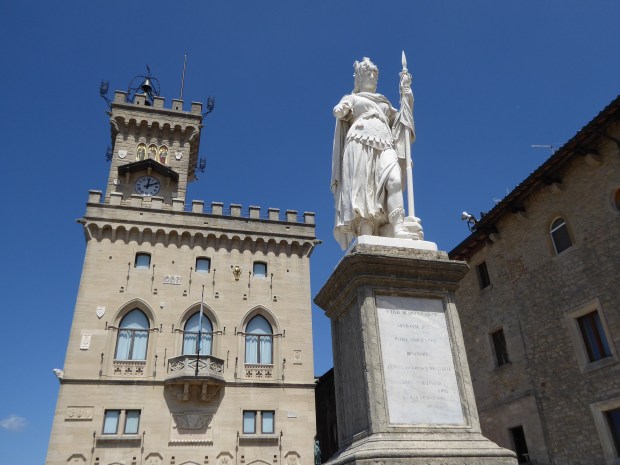As a day trip from Ravenna, we drove south about 78 km (48 miles) to the hilltop Republic of San Marino. As we sped down the motorway, we could see the striking Monte Titano in the distance and wondered if it was the little country of San Marino. Sure enough, it was, and what a sight. San Marino’s location is one of the most scenic spots in the Italian peninsula, and the country lives up to its formal name.
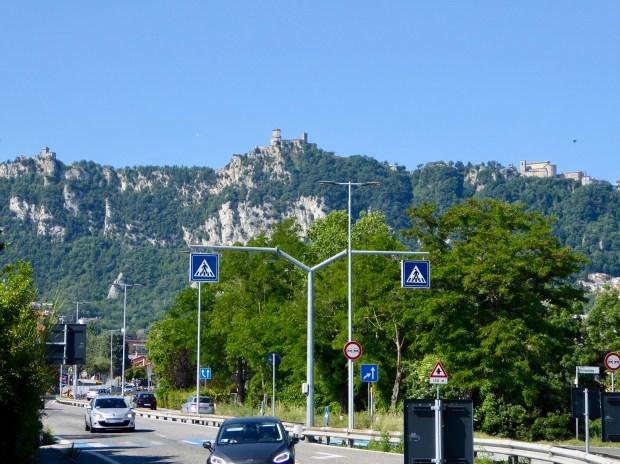
A view of the Monte Titano and the fortifications of Guaita Castle as you approach from Borgomaggiore, the largest town in San Marino.
San Marino is the oldest Republic in Europe. It is only 7 miles (12 km) across at its widest spot (about 23 sq. miles overall), and the 3rd smallest country in Europe (after the Vatican and Monaco) and the 5th smallest country in the world. You can learn more about this little country here. Other than a bridge noting the border you would have no idea you’ve entered a different country.

The road border crossing. San Marino on the left, Italy on the right.
From the border on the eastern side, we drove up (and up) the mount until we reached a parking area right below the town of San Marino.
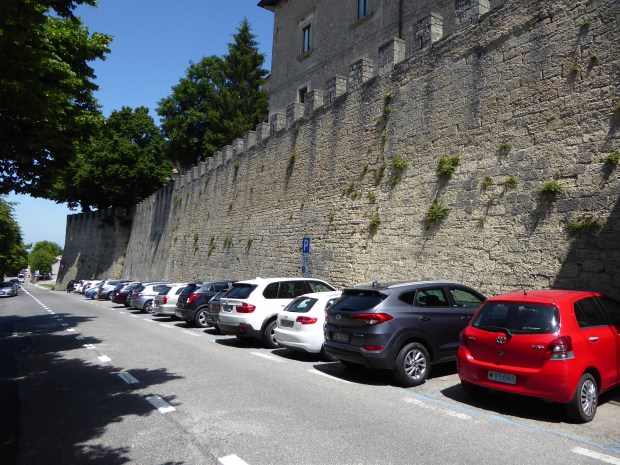
One of the car parks below the town of San Marino. We had no trouble finding a parking spot in May. You can also take a cable car to the top of Monte Titano.
From the car park we walked up into the town of San Marino, which like so many old walled European towns is very enchanting.
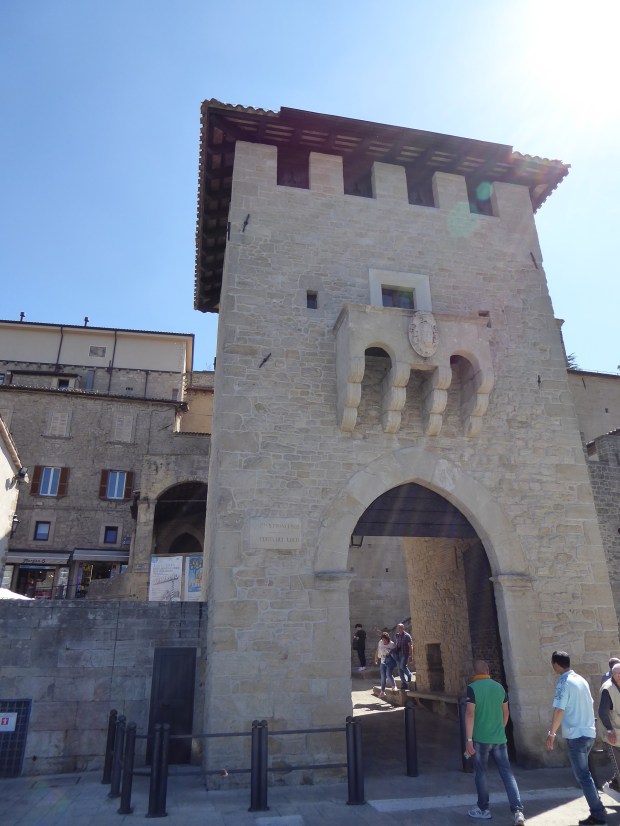
One of the old gates into the hilltop town of San Marino.

Nearly every street in San Marino provides a postcard view.
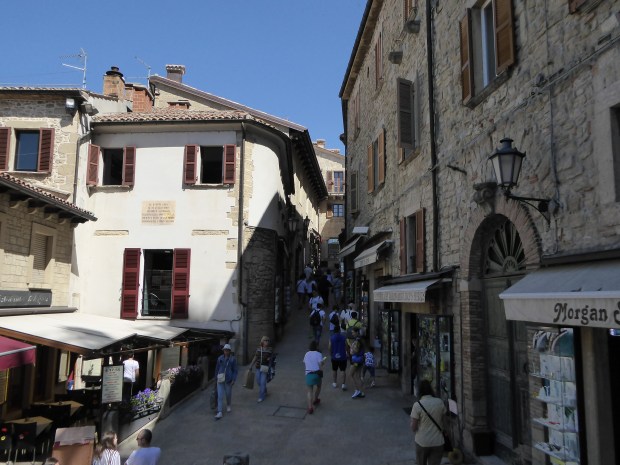
Another street scene in San Marino.
As you climb the narrow streets, you will come to Liberty Square, the main plaza in San Marino and the seat of the national government.

A view of the Public Palace, home of San Marino’s General Council or Parliament, and other government officials. Under this square are ancient water cisterns, extremely important for a fortified hilltop medieval citadel.
One of the most striking features of San Marino is its amazing fortress, Guaita, that sits at the top of the town, on the eastern cliff edge of Monte Titano. The fortress consists of three towers, you can buy a ticket that allows you access to all three.
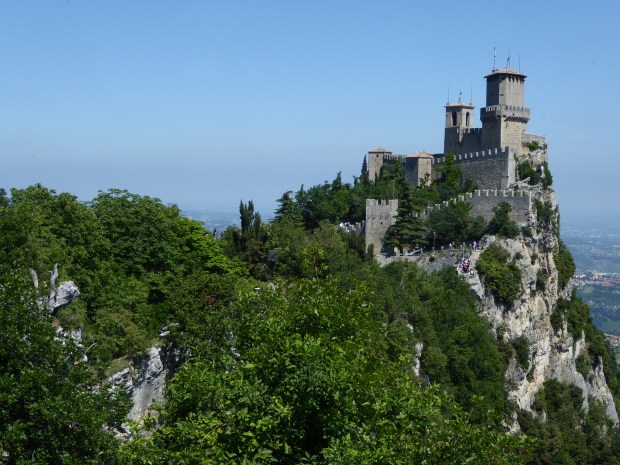
This view is from the 2nd tower of Guaita Fortress, looking north to the main or 1st tower, also called Rocca Tower.

This view is also from the 2nd tower, looking south to the 3rd tower on the next hilltop ridge. The surrounding countryside is beautiful in May.

This is a close up view of the 2nd tower of Guaita Fortress.
I have to say the view from the fortress of the surrounding countryside is one of the most beautiful views in Italy.
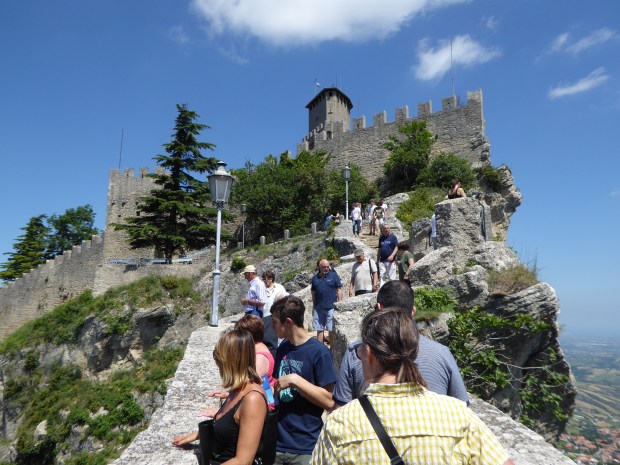
Climbing up to the Rocca tower from the 2nd tower.
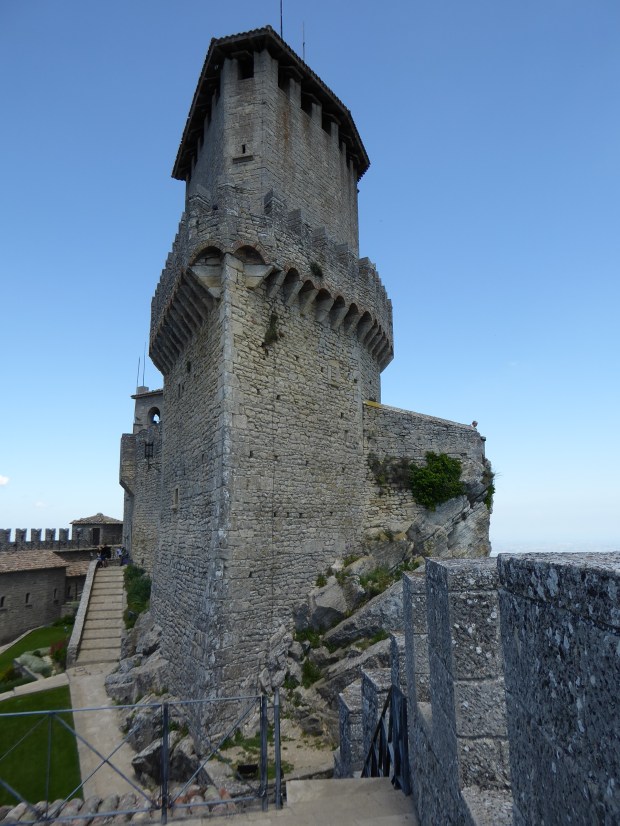
The main tower (known as Rocca Tower) of Guaita Fortress, is built on top of a narrow rock outcropping on Mt. Titano. You climb up a narrow steep stairway to get to the top.
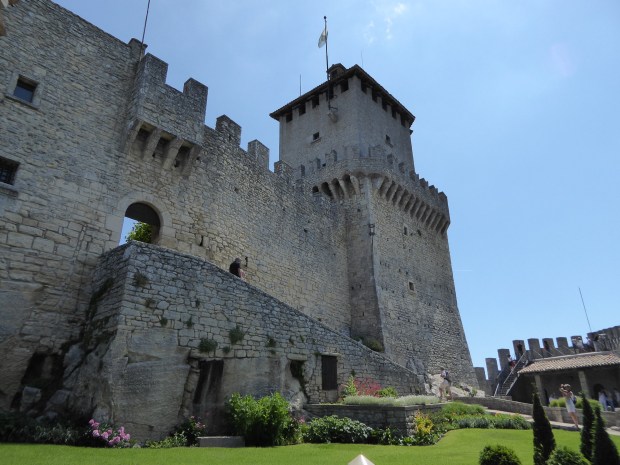
The fortress grounds are well manicured.

View of San Marino and the surrounding countryside from the top of the Rocca tower.

Inside Guaita Fortress is a small museum and a prison.
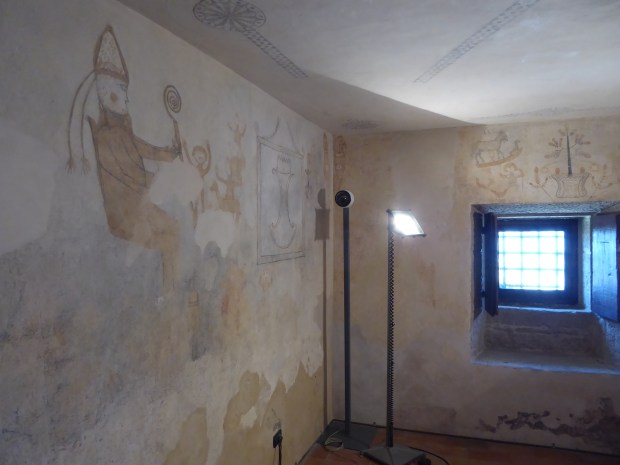
One of the prison cells in Guaita Fortress. The paintings were done by 19th century prisoners. Prisoners had to pay for their keep here, and punishments were harsh. The “rack” and lashings were commonly used. In 1821, San Marino abolished these forms of punishment. The death penalty was outlawed by San Marino’s Parliament in 1848.
San Marino takes its name from a monk, Saint Marinus, who fled persecution by the Roman Emperor Diocletian in the 3rd century CE and came to this (at the time) remote spot. The mountain (Monte Titano) was given to him in appreciation for his acts of healing. Saint Marinus died in 301 CE.
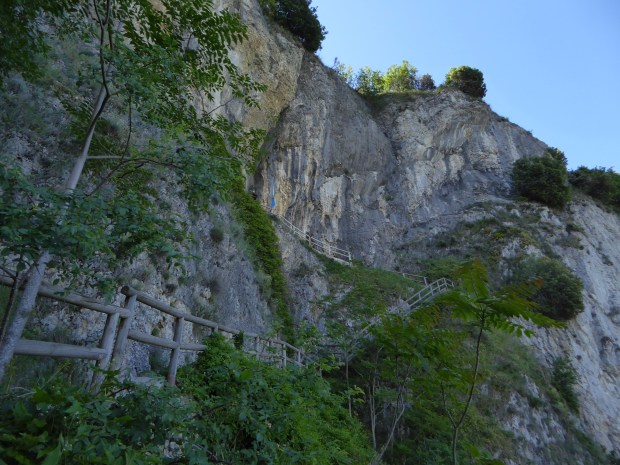
This wooden stairway leads up to the little cave-like area where Saint Marinus lived. It is on the north side of Monte Titano.

The lovely view from Saint Marinus’ cave, looking northeast to the Adriatic Sea in the distance.

The 19th century Basilica of Saint Marinus, in the town of San Marino is built on the remains of a medieval church and contains an urn with the bones of Saint Marinus, which were found in the 1500’s.
If your travels take you down the east coast of Italy, be sure to visit San Marino. You can see a new country, take in incredible views, visit a great medieval fortress and town, all in one place!
